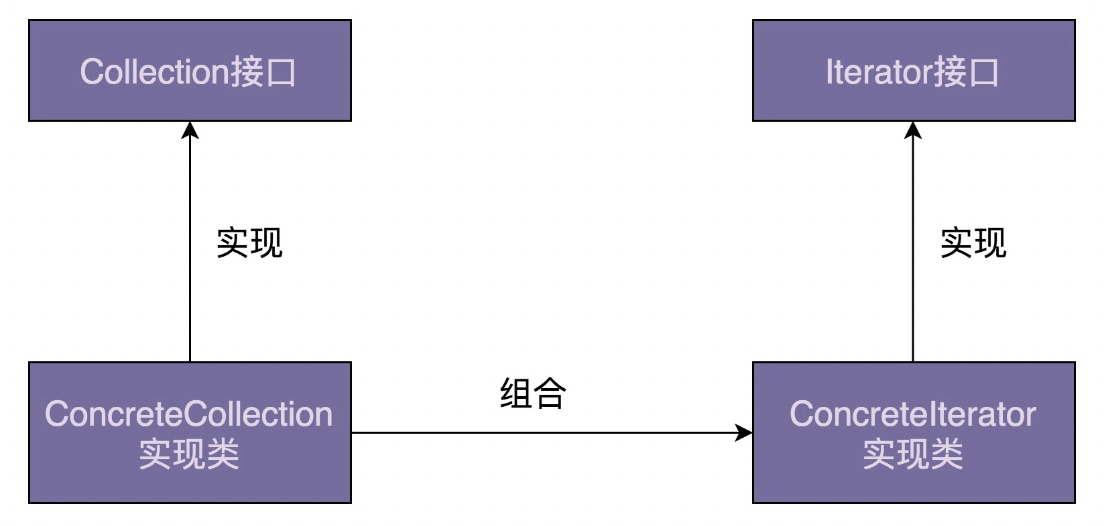Shiro-整合SpringBoot
准备环境
pom.xml依赖
用户信息存储在MySQL中,dao层使用Spring Data JPA,因此需要引入相关的依赖
1 |
|
用户信息存储在MySQL中,dao层使用Spring Data JPA,因此需要引入相关的依赖
1 | <?xml version="1.0" encoding="UTF-8"?> |
中介模式的英文翻译是 Mediator Design Pattern。在 GoF 中的《设计模式》一书中,它是这样定义的:
Mediator pattern defines a separate (mediator) object that encapsulates the interaction between a set of objects and the objects delegate their interaction to a mediator object instead of interacting with each other directly.
翻译成中文就是:中介模式定义了一个单独的(中介)对象,来封装一组对象之间的交互。将这组对象之间的交互委派给与中介对象交互,来避免对象之间的直接交互。
解释器模式的英文翻译是 Interpreter Design Pattern。在 GoF 的《设计模式》一书中,它是这样定义的:
Interpreter pattern is used to defines a grammatical representation for a language and provides an interpreter to deal with this grammar.
翻译成中文就是:解释器模式为某个语言定义它的语法(或者叫文法)表示,并定义一个解释器用来处理这个语法。
看了定义,你估计会一头雾水,因为这里面有很多我们平时开发中很少接触的概念,比如“语言”“语法”“解释器”。实际上,这里的“语言”不仅仅指我们平时说的中、英、日、法等各种语言。从广义上来讲,只要是能承载信息的载体,我们都可以称之为“语言”,比如,古代的结绳记事、盲文、哑语、摩斯密码等。
要想了解“语言”表达的信息,我们就必须定义相应的语法规则。这样,书写者就可以根据语法规则来书写“句子”(专业点的叫法应该是“表达式”),阅读者根据语法规则来阅读“句子”,这样才能做到信息的正确传递。而我们要讲的解释器模式,其实就是用来实现根据语法规则解读“句子”的解释器。
命令模式的原理解读命令模式的英文翻译是 Command Design Pattern。在 GoF 的《设计模式》一书中,它是这么定义的:
The command pattern encapsulates a request as an object, thereby letting us parameterize other objects with different requests, queue or log requests, and support undoable operations.
翻译成中文就是下面这样。为了帮助你理解,我对这个翻译稍微做了补充和解释,也一起放在了下面的括号中。命令模式将请求(命令)封装为一个对象,这样可以使用不同的请求参数化其他对象(将不同请求依赖注入到其他对象),并且能够支持请求(命令)的排队执行、记录日志、撤销等(附加控制)功能。
假设我们从网站上爬取了很多资源文件,它们的格式有三种:PDF、PPT、Word。我们现在要开发一个工具来处理这批资源文件。这个工具的其中一个功能是,把这些资源文件中的文本内容抽取出来放到 txt 文件中。如果让你来实现,你会怎么来做呢?
实现这个功能并不难,不同的人有不同的写法,我将其中一种代码实现方式贴在这里。其中,ResourceFile 是一个抽象类,包含一个抽象函数 extract2txt()。PdfFile、PPTFile、WordFile 都继承 ResourceFile 类,并且重写了 extract2txt() 函数。在 ToolApplication 中,我们可以利用多态特性,根据对象的实际类型,来决定执行哪个方法。
迭代器模式(Iterator Design Pattern),也叫作游标模式(Cursor Design Pattern)。在开篇中我们讲到,它用来遍历集合对象。这里说的“集合对象”也可以叫“容器”“聚合对象”,实际上就是包含一组对象的对象,比如数组、链表、树、图、跳表。迭代器模式将集合对象的遍历操作从集合类中拆分出来,放到迭代器类中,让两者的职责更加单一。
迭代器是用来遍历容器的,所以,一个完整的迭代器模式一般会涉及容器和容器迭代器两部分内容。为了达到基于接口而非实现编程的目的,容器又包含容器接口、容器实现类,迭代器又包含迭代器接口、迭代器实现类。对于迭代器模式,我画了一张简单的类图,你可以看一看,先有个大致的印象。

职责链模式的英文翻译是 Chain Of Responsibility Design Pattern。在 GoF 的《设计模式》中,它是这么定义的:
Avoid coupling the sender of a request to its receiver by giving more than one object a chance to handle the request. Chain the receiving objects and pass the request along the chain until an object handles it.
翻译成中文就是:将请求的发送和接收解耦,让多个接收对象都有机会处理这个请求。将这些接收对象串成一条链,并沿着这条链传递这个请求,直到链上的某个接收对象能够处理它为止。